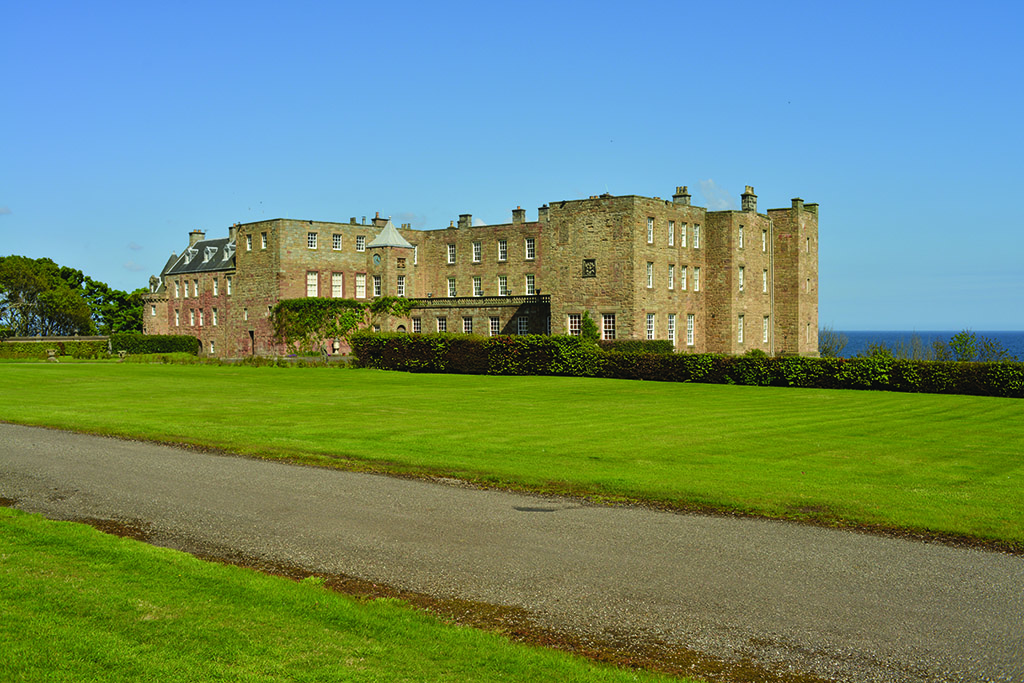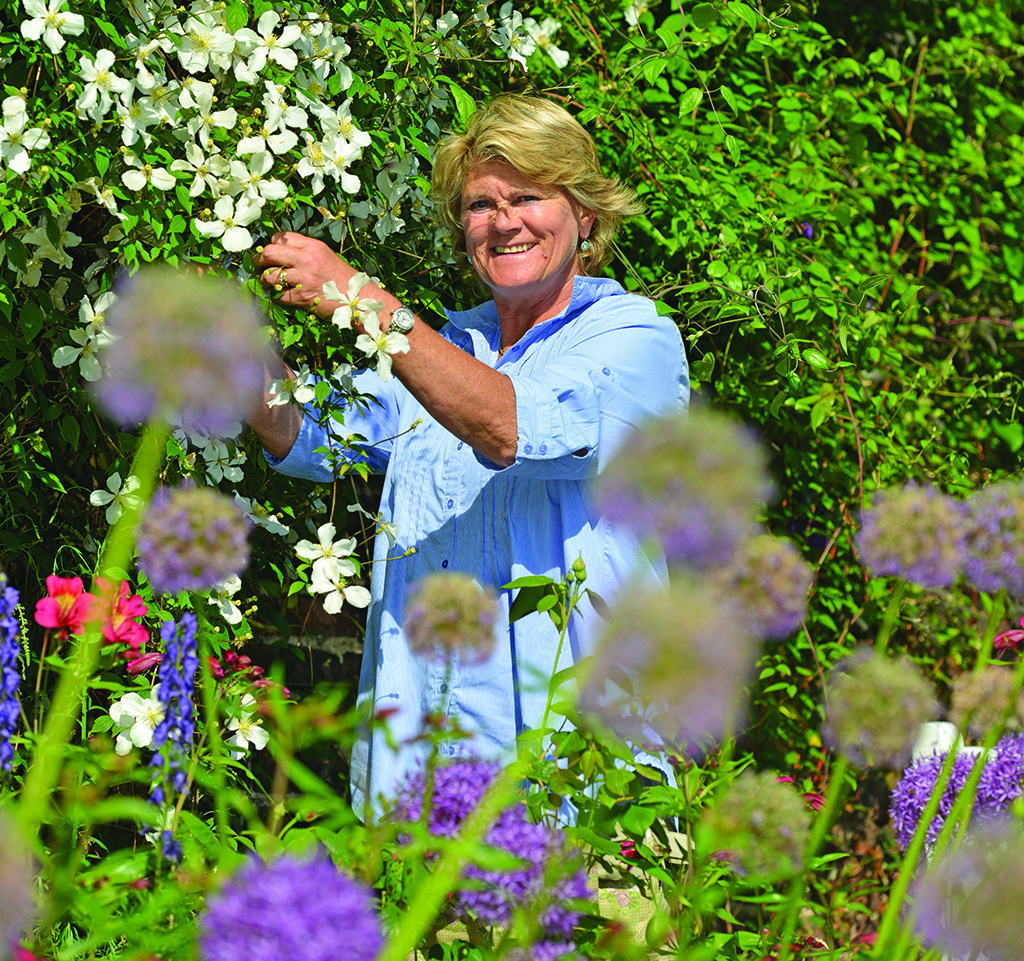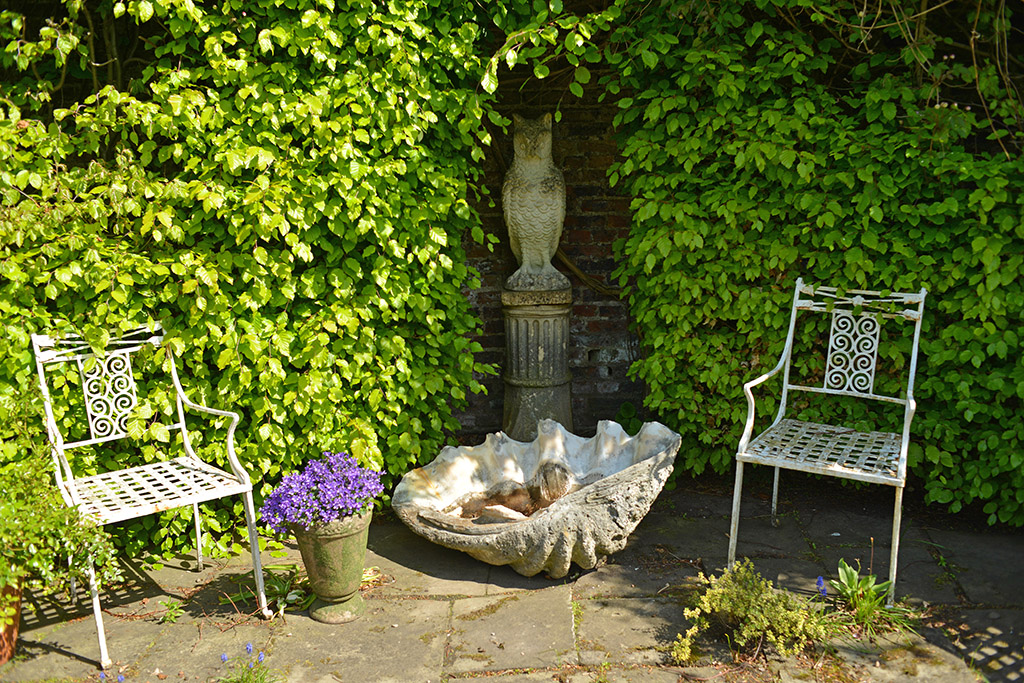When Charlotte Wemyss arrived at her husband Michael’s family home in Fife, its six-acre walled garden overlooking the Forth contained a few redcurrant bushes, five ancient apple trees and three geese.
Twenty years on, and the gently sloping south-facing site at Wemyss Castle has been transformed into a striking garden, a skilful combination of traditional features and contemporary design.
The success of this garden, which is widely recognised as one of the most exciting in Scotland, owes much to Charlotte’s energy, her passion for plants and her willingness to experiment.
Roses were her first love, and for years they scrambled up the ancient James Grieve apple trees, over pergolas and down the 15ft walls in romantic cascades. When all the apple trees bar one blew down in a gale, taking their roses with them, the ‘basic structure’ of the garden was lost so Charlotte decided to combine the remaining roses with clematis: robust Clematis montana are her first choice but she also enjoys other varieties.
Her passion for the rambling C montana was ignited when she came across a pink cottage in Fife smothered in the claret-coloured leaves of a vigorous C. montana var. rubens.
‘I had no idea what this ravishing plant romping over the entire cottage was,’ she says. ‘So I stopped and knocked on the door. The owner kindly gave me some cuttings and told me what to do with them.’
A self-confessed ‘greedy gardener’, Charlotte was instantly smitten by these glorious plants that ‘whirl like ballet dancers along the walls and cascade like waterfalls through trees. I began to collect them like stamps.’

Wemyss Castle (Photo: Angus Blackburn)
Ten years and much advice later, she had acquired the unofficial national collection of C. montana in Scotland. ‘I stress “unofficial”, because while I have over a hundred different varieties I’m not a professional botanist,’ she says.
Among the varieties displayed along the Exhibition Wall, a south-west-facing stretch at the rear of the walled garden, are vigorous whiteflowering C. montana grandiflora, creamy Dr
Penelope and the starry Gothenberg. Fragrant blooms boast the double-pink Rosebud, the mile-a-minute vanilla-scented Elizabeth, pink Tetrarose and frilly Marjorie.
Compact varieties ‘that won’t take over your neighbours’ chimneys and can be trained through a small pergola or fence’ include fragrant white Prosperity, deep-pink Sunrise, and Primrose Star.

Charlotte at work taming the profusion of flowers (Photo: Angus Blackburn)
Other varieties are festooned round the garden walls, threaded through the fresh green foliage of Hydrangea petiolaris or mingling with roses. Shrubs and trees are underplanted with clematis; they scramble through evergreen shrubs and, despite the dry conditions, spring out of dense leylandii and beech hedges. The double, Primrose Star, a particular favourite, is cleverly hosted by a cotoneaster at the side of the potting shed.
C. montana, Charlotte soon learnt, is relatively easy to grow. ‘They’re not too fussy about conditions,’ she says. They do, however, need to be planted deep. Good preparation is essential: Charlotte always fills holes with leaf mould and inserts a three-inch drainpipe at the side of the plant to help with watering – ‘although snails tend to be attracted to the drainpipes’. A river of red-flowering valerian shades the roots of the plants.
In late spring and early summer clematis are the undoubted stars but there is much else to be seen at Wemyss. The scene is set on arrival by the magnificent classical vistas and views of the sea framed by beech hedges. The woodlands to the rear of the castle are packed with a succession of bulbs: in late May, bluebell-lined paths are punctuated with the last of the Narcissus poeticus and the marbled leaves of the lilac Erythronium revolutum. The latter is a legacy of Michael’s grandfather, who scattered the seeds in the 1930s; they failed to spread in profusion until the couple cleared the undergrowth.

A look at the Wemyss Castle gardens (Photo: Angus Blackburn)
Just outside the six-acre walled garden sits a bed of purple, blue and yellow iris combined with wildflowers such as primroses, cowslips and ox-eye daisies. Inside the walls, some of the herbaceous borders have been simplified to
‘blocks of colour’, such as the hydrangea beds that flank the clematis-festooned Greek revival orangery that divides the space.
Characteristic of Charlotte’s exuberance are the delicate silver arches made by Mihai Crocis, a Romanian ironworker based at Gordons Hall Farm in Anstruther. These galvanised arches support an abundance of roses and clematis.
The gardens are open by appointment from the end of April to the end of August.
‘I like to think that the gardens here have a spiritual, calming effect,’ explains Charlotte. ‘You can listen to the sea and hear the incredible birdsong and just soak up the peace and calm.’
Find out more at www.wemysscastlegardens.com
- This feature was first published in 2014.
TAGS

